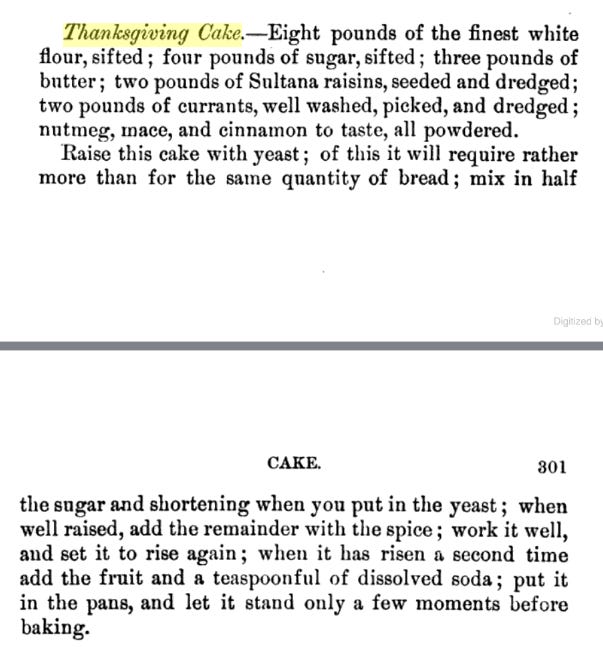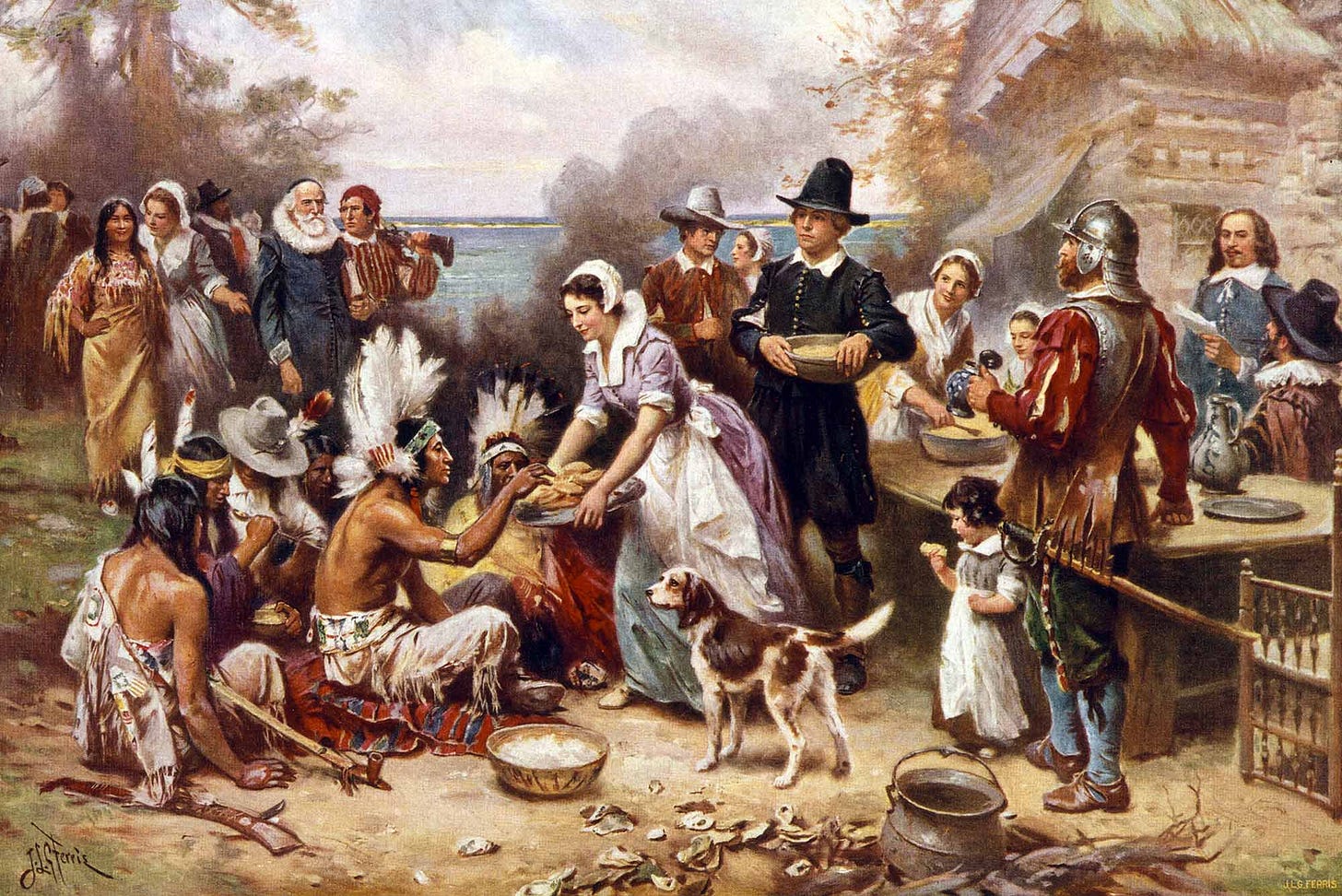Ahh Thanksgiving. That awkward holiday that feels uniquely American (shut it, Canada), but is also historically complicated, leading to tricky conversations with the small children who have off school for several days (if not the whole week) while their parents juggle work (very American) and pending grocery store closures. And that doesn’t even account for the big meal, or all the planning and prep labor that is almost always performed by women, much of which the children won’t even eat. If only there were a special food or dish that we made during just this time of year to compensate for all the trouble this holiday causes. Turkey is a Christmas item, too. All the sides are similar staples of other holiday tables. Cranberries don’t even really get a reprieve until after the winter. Maybe, there’s a baked good? Mayhap a special cake?
Yes! The traditional, eponymous, every-American-definitely-knows-about-this Thanksgiving Cake!
You haven’t heard about Thanksgiving Cake? Well, let me enlighten you with a short-but-sweet (remember those pesky childcareless kids at home this week?) bit of food history while you finish your half workday.
An early mention of Thanksgiving Cake appears in the National Cookery Book, touted as “the first all-American cookbook” or “America’s first ‘national’ cookbook,” despite many others existing prior. This cookbook was compiled for America’s Centennial celebration in 1876 in Philadelphia by the Women’s Executive Committee, not long after Thanksgiving became an federally recognized holiday in 1863. Purportedly chaired by Benjamin Franklin’s great granddaughter, Elizabeth Duane Gillespie, this committee sent invitations to women across the nation to submit recipes for the book. The resulting compilation reported to include “purely American recipes” and excluded “the receipts common to all nations” (sure, Jan). One recipe was for Thanksgiving Cake, which described a yeasted, enriched cake, studded with dried fruits such as currants and citron and flavored with spices including nutmeg and cinnamon.

Wait. That sounds a lot like another cake I’ve seen before. Let’s look at another recipe. This one here is from the The Unrivalled Cook-Book and Housekeeper’s Guide published in 1886.

This is weird. This cake sounds an awful lot like other historical cakes I’ve seen before, ones that simply take an old cake-baking method and flavor profile and slap a new nostalgia-inducing name on it. Let’s look at one more from The Inglenook Cook Book, published nearly two decades later in 1901.

Okay, there’s some new dried fruits and coffee for a flavor update. Does that say it will keep for 3 MONTHS? Seriously this sounds just like another cake I know of…

*comically spits out cranberries* BUT MRS. BEETON WAS BRITISH! Why is she talking about Thanksgiving Cake and publishing our very American recipe?! Well, as I’m sure you haven’t possibly deduced by this point, I’m afraid to inform you that Thanksgiving Cake isn’t that special after all, because it is merely ELECTION CAKE using a different name! BUT WAIT, Election Cake is really just a traditional early English-style fruit cake or “plumb cake.” We’ve come full circle! What could this possibly mean for our cherished cultural and historical American food traditions?
Well, it doesn’t really mean anything, except that cake names perhaps carry more cultural significance than the recipes themselves. It might also mean that early American women made a ton of fruit cake for election season because their husbands said “all the boys” when asked about a headcount and she’s a waste-not-want-not girlie and stretched that shelf-stable cake until the next holiday. Most likely, it’s a symptom of our collective national obsession with nostalgia and mythmaking that makes us look back on the foodways of the past (even if only the recent past) and saddling dishes we find significant with hefty names like “Election Cake” and “Thanksgiving Cake.” Like the “great times” that evidently stick “in the memory of many a boy grown to manhood” as they romanticize their mother prepping for Thanksgiving weeks before the actual holiday meal (ugh, girl, I feel you).
Published recipes for Thanksgiving Cakes begin to wane around the 1920s, perhaps due to yet another opportunistic shift to turn Christmas into the de facto fruit cake holiday. A decade later, Fro-Joy, a brand of the General Ice Cream Corporation (and later part of Kraft) filled the Thanksgiving Cake void with their own interpretation of the traditional “plumb cake” with plum pudding vanilla ice cream cakes topped with frozen ice cream turkeys. *reevaluates Thanksgiving menu, considers scrapping all for an in-depth ice cream cake making adventure.*
And if I had any power in my role as the Internet’s snarky cake scholar, I would kindly like to request that we bring back this ice cream cake tradition (honestly far more American) and leave the fruit cakes to panicked election day baking and Christmastime gift giving.
Happy Thanksgiving!
Pairs well with:
To learn more about all the foods we associate with Thanksgiving, check out this great Q&A with BU Gastronomy professor (my alma mater!) and food anthropologist Karen Metheny. A great read for breaking tension around the dinner table (lol, jk, this will definitely make it worse).










😂😂😂 Definitely in favor of ditching "traditional" Thanksgiving cake and going for the turkey-topped ice cream cake! Americans have been obsessed with ice cream for ages, so I think it's much more fitting.